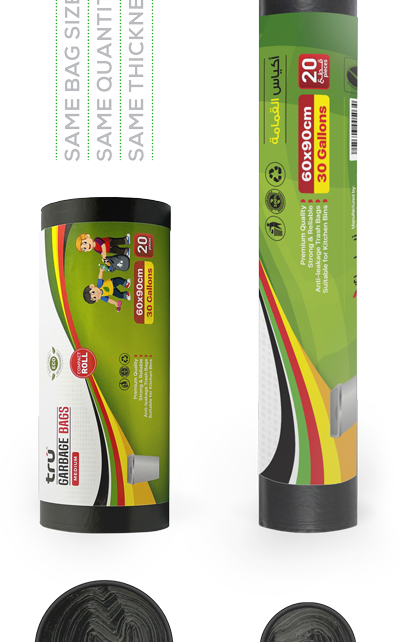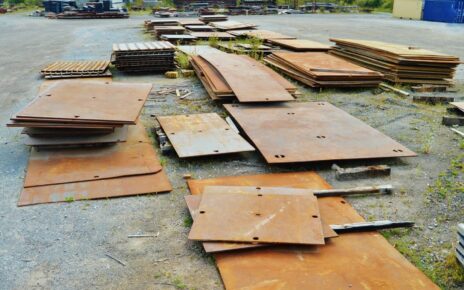Black garbage bags are a staple in homes, offices, and commercial spaces. They’re reliable, versatile, and designed to hide unsightly waste while keeping environments clean and sanitary. However, choosing the right size black garbage bag for your needs can be more complicated than it seems. Picking a bag that’s too small may lead to overflow or breakage, while a bag that’s too large can be wasteful and awkward to use. This guide will help you understand how to select the ideal size black garbage bags based on your specific requirements.
1. Understand the Common Garbage Bag Sizes
Black garbage bags typically come in a wide range of sizes to suit different applications. Knowing the standard measurements can help you make a better decision.
- Small (4–10 gallons): Ideal for bathroom bins or personal desk trash cans.
- Medium (13–30 gallons): Suitable for kitchens, bedrooms, or small office bins.
- Large (33–50 gallons): Best for yard waste, large family bins, or heavy-duty household cleaning.
- Extra Large (55–95+ gallons): Used for industrial, construction, or commercial cleanup jobs.
Always consider both the gallon capacity and dimensions (length and width) of the bag. Gallon size alone doesn’t always tell you if the bag will fit your bin, especially if it’s a uniquely shaped container.
2. Measure Your Bin Correctly
The best way to ensure a proper fit is to measure your trash bin. Use a measuring tape to get the dimensions:
- Width: Measure the opening of the bin from side to side.
- Height: Measure from the bottom of the bin to the top.
- Depth (if applicable): For rectangular or square bins, consider the depth for a better fit.
Once you have the measurements, you can follow a basic formula:
- Bag Width = (Width of bin + Depth of bin) × 2 ÷ 2
- Bag Height = Height of bin + 4 inches (for overhang) + ½ of the depth
These measurements will help you find a bag that fits snugly without slipping down or being difficult to tie.
3. Consider the Type and Volume of Waste
The kind of waste you plan to dispose of plays a major role in determining the size and strength of your black garbage bag.
- Light waste like paper and packaging can go in smaller bags.
- Wet or heavy waste like food scraps, glass, or broken items will need larger, thicker bags with higher weight capacity.
- Yard waste such as leaves, branches, and soil typically requires larger, heavy-duty bags.
If your waste is likely to have sharp edges or is very dense, consider upgrading to a larger bag to avoid tearing.
4. Look at Bag Thickness (Mil Rating or Micron)
Size isn’t the only factor that matters—thickness plays a crucial role in durability. Garbage bag thickness is usually measured in:
- Mil (for low-density bags) – Commonly used in households or for heavy items. Thicker mil ratings (1.5 mil and up) are stronger.
- Micron (for high-density bags) – Ideal for office or light-weight waste. These are thinner but can be stronger under tension.
For example:
- 0.5–0.7 mil: Suitable for light office waste
- 1.2–1.5 mil: Good for kitchen or household waste
- 2.0+ mil: Necessary for construction debris or yard waste
Choose the thickness based on how tough the job is. Bigger doesn’t always mean better if the bag can’t withstand the weight.
5. Match the Bag to the Bin Shape
It’s not just about size, but also shape. Is your bin round, square, or rectangular? Some bags are designed to fit specific shapes better.
- Round cans: Typically require bags with more flexibility and stretch.
- Rectangular bins: May need longer bags for full coverage and overhang.
- Slim or tall bins: Look for tall, narrow bags with extra height.
Ensuring a snug fit around the rim reduces the chances of the bag slipping into the bin, which is both inconvenient and unhygienic.
6. Assess the Closure Type
Bag size often affects how it’s sealed. There are various closure types:
- Drawstring: Convenient for easy closing and carrying.
- Flap tie: Traditional, requires manual tying.
- No tie: Best for quick disposal where sealing isn’t necessary.
Larger bags often come with flap ties or open tops, while smaller to medium bags usually feature drawstrings. The closure method should match how you intend to dispose of the waste.
7. Factor in Usage Frequency and Storage
How often you replace your garbage bag can also determine the right size. If your bin fills quickly, a larger size may help reduce frequent changes. However, if the trash sits for days, using a bag that’s too large might result in unpleasant odors or leakage.
Also, consider where and how you’ll store your garbage bags. Large rolls of industrial-sized bags may require more space and are typically more cost-effective for high-volume users.
Choosing the right size black garbage bag isn’t just about finding something that fits—it’s about maximizing convenience, cleanliness, and efficiency. Start by measuring your bin, understanding the type of waste you generate, and matching the size and thickness to your needs. Whether it’s for a tiny bathroom trash can or a massive construction cleanup, there’s a black garbage bag out there that’s perfectly suited for the job. Selecting the right one can save you time, reduce messes, and make waste disposal a hassle-free task.



